Inonotus obliquus, commonly known as chaga mushroom is a fungus that primarily grows on birch trees. While it can grow on other trees, I’ve personally only found it on birch trees.
Chaga is parasitic and will eventually kill the tree but an otherwise healthy tree can survive for decades (up to 80 years or more) after Chaga takes hold. You can even re-harvest Chaga every 3 – 10 years as it will regrow back after harvesting as long as you leave about 15% of the Chaga on the tree when you first harvest it.
So what does Chaga look like?
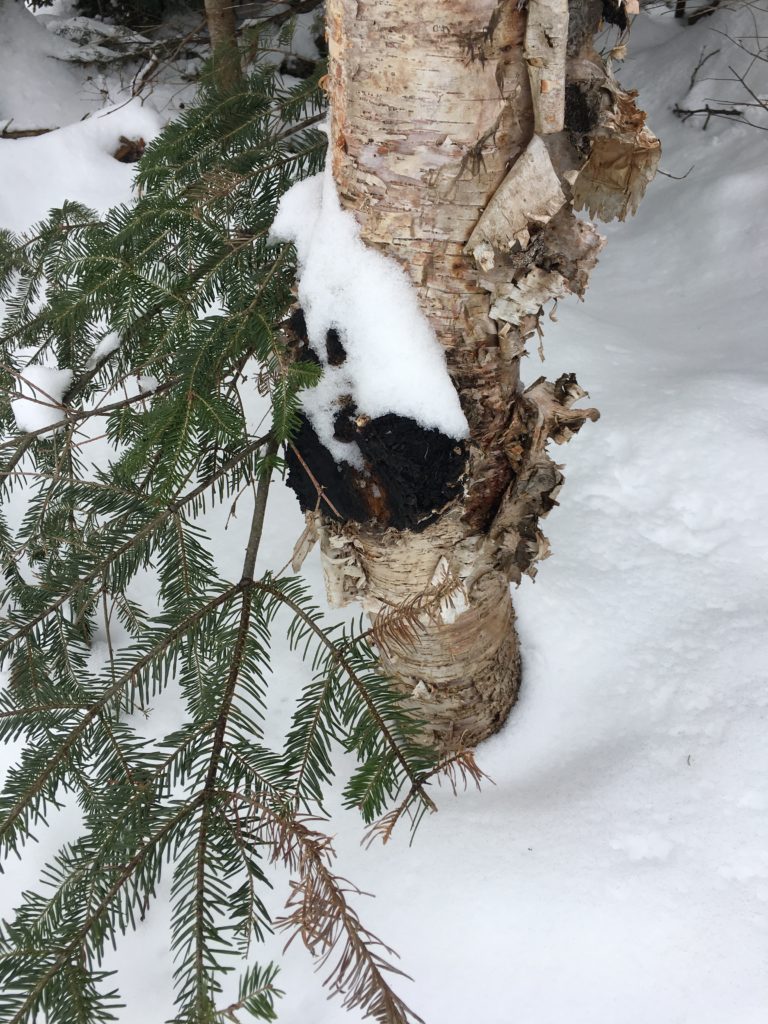
See the dark black mass near the base of the birch tree wearing his little snow cap – that’s Chaga. The best time to hunt for Chaga is the winter as the this is when the birch trees have gone dormant for winter and the Chaga is at its peak nutrient values.
You don’t want to harvest Chaga after the sap in the birch tree starts running as the sap will flush most of the nutrients out of the Chaga at that point. So wait until the
So how do you find Chaga?
First of all, Chaga is rare and on average grows on 1 in 20,000 birch trees. So set your expectations and consider yourself lucky if you find even one tree with Chaga on it. That being said there are few ways to increase your odds.
After a fresh snowfall, the little “snow caps” (pictured above) are a great giveaway, you can generally see these caps before the Chaga itself.
Another tip is that Chaga likes to grow in wet areas so you increase your odds in low lying areas or by bodies of water (streams, ponds etc.).
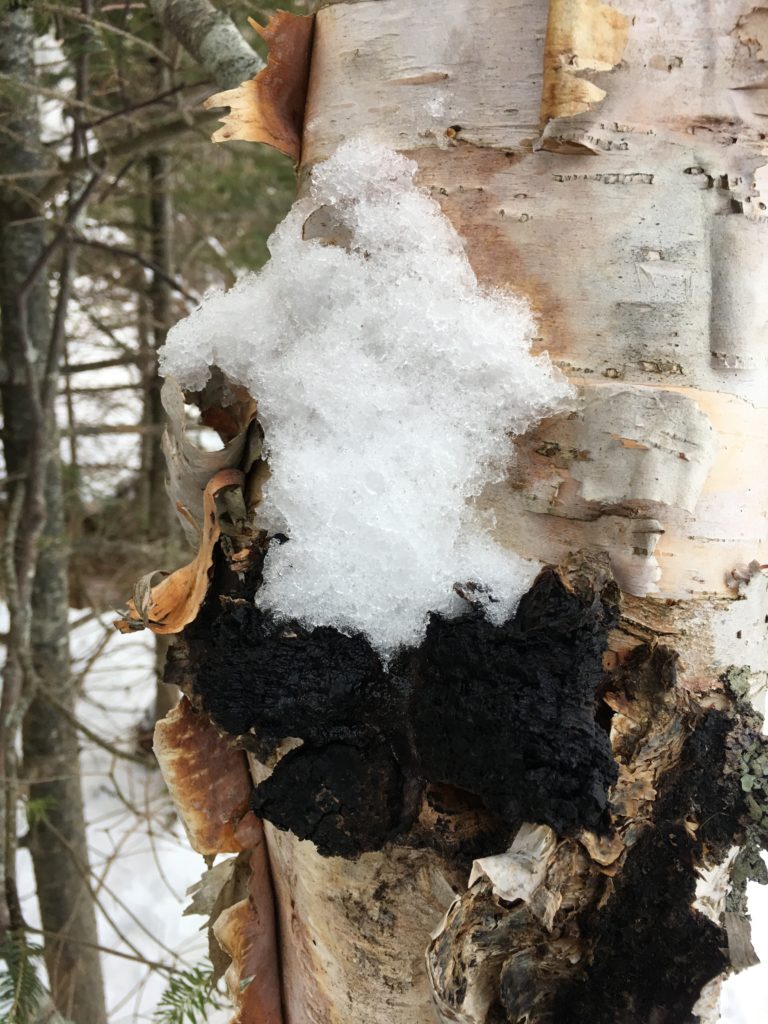
Before you harvest Chaga you want to keep a couple important points in mind:
- Harvest from living trees only, a dead tree means the Chaga has also died. If it’s not obvious if the tree is alive or dead look for the buds, even in the winter you can still easily see these.
- Only harvest Chaga that is roughly the size of a grapefruit or larger.
- Leave about 15% of the Chaga behind when you remove it, this will allow it to grow back to harvest again in later years.
- Harvest Chaga away from roads and other sources of pollution, the Chaga will absorb elements from the environment it grows in.
- Chaga that is higher up and/or less shaded and receives more sunlight will be higher in Vitamin D!
Reported Health Benefits of Chaga
You can do your own deeper research but here are a few of the most commonly reported health benefits of Chaga you will find:
- Anti-inflammatory, anti-viral, and antibacterial properties
- Immune booster and modulator (but it will also lower an overactive immune system as well)
- Anti-cancer
- Improves skin repair and DNA protection
- High in superoxide dismutase (SOD), an important enzyme that functions as a powerful antioxidant. All together it gives your body seven different antioxidants
- A free radical scavenger in your body.
Keep in mind as of January 2019, there have been no human clinical trials with Chaga. That doesn’t mean it doesn’t potentially have any of the above effects. What it does mean is that science has not confirmed any of these claims yet in human studies. So anything you read online in regards to health benefits should be read with some skepticism.
As with most things, the greater and more fantastic the claims, the more skeptical of the source you should be. I encourage you to read this article for more info.
Even if Chaga doesn’t fulfill all its’ health promises, getting out in nature to forge for it is an enjoyable/healthy experience on its own. I also personally enjoy the flavour of the tea and that’s enough for me.
Beware the False Chaga
Almost any fungus that grows on a tree (at least in Canada) will not seriously harm you if ingested. However, you will still want to make sure you are getting the real thing.
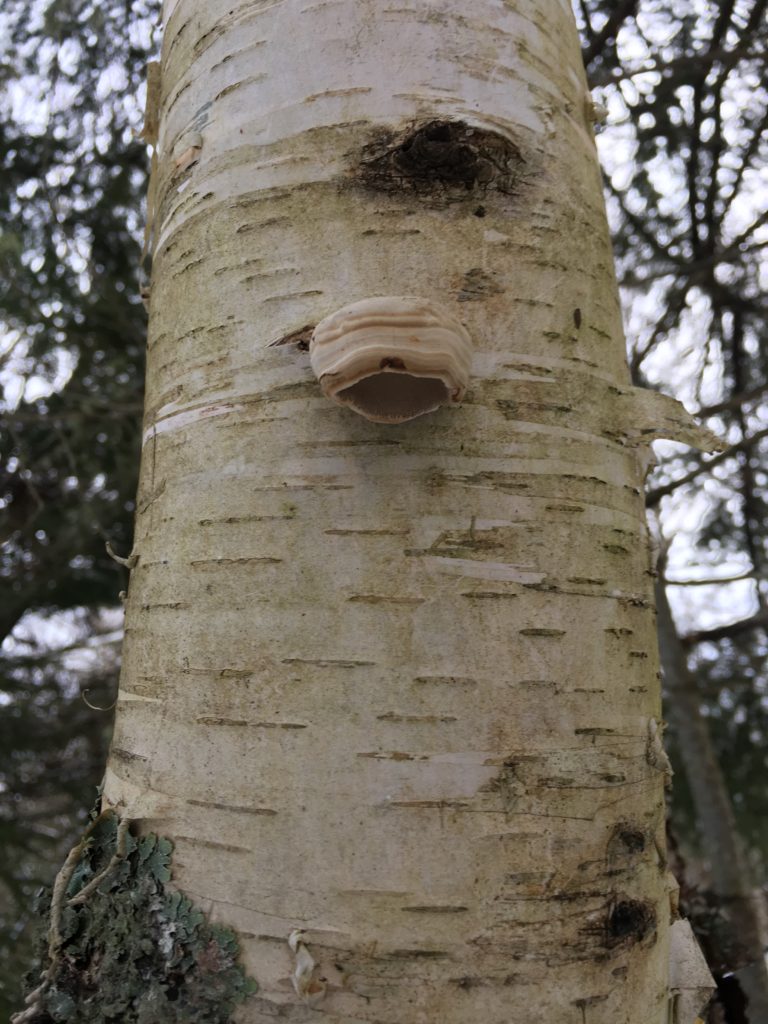
Not Chaga, this the more common growth seen on Birch trees called birch gnarl. It can range in colors from light to a dark grey color . This growth is actually part of the tree itself and generally takes on a smooth “UFO” type shape. Chaga will be very rough, irregular shaped and a deep black you can not mistake the two when compared side by side.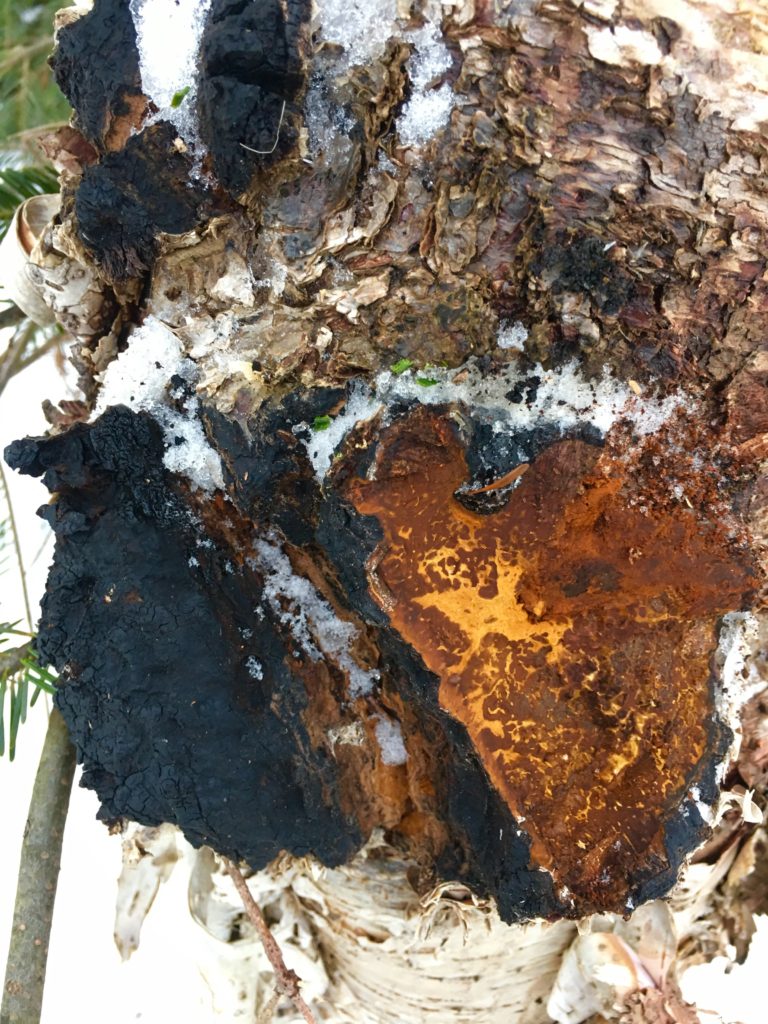
Notice the deep black rough charcoal like exterior on the outside and golden interior.
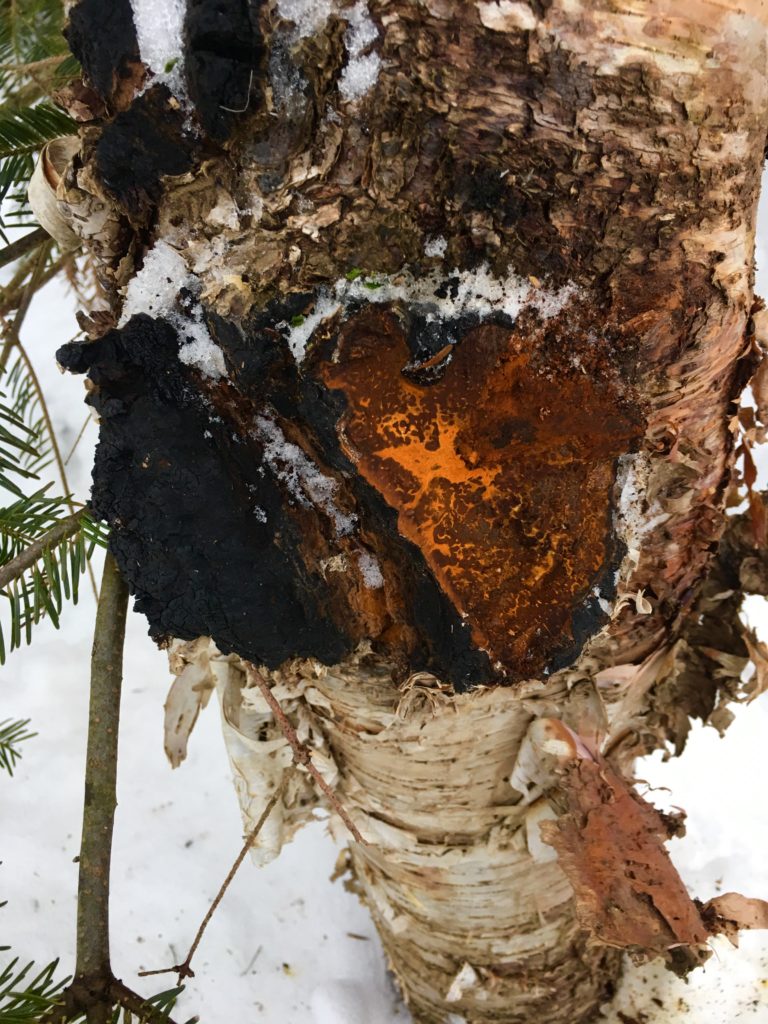
Untouched Chaga on the left, inside of Chaga after piece removed on the right.
Above you can see the final tell tale sign that you have found real Chaga. Once you remove the Chaga you will find a beautiful deep rusty/gold colour.
To remove Chaga first make sure to never cut into the tree itself, again you want to leave a portion of the Chaga on the tree so it can grow back. Using a clean stainless steel tool (knife, hatchet etc.) carefully remove a portion of the Chaga. With a knife you can generally whittle and wedge your knife into the Chaga to “pop” off a chunk.
Once you get your new Chaga home, put it in a cloth bag (or plastic bag) and wrap it in a towel and go to town on it with a hammer. This will allow you to break the Chaga up into chunks for tea brewing. I personally prefer to keep the chunks around 0.5 – 1 inch in size for better drying / brewing.
The Chaga can be used to make tea right away, however, for longer
Once the Chaga chunks are dried you can store them indefinitely in a mason jar or cardboard box – as long as they don’t mould they should be good for future use!
Chaga tea has a slight vanilla and mild earthy taste, it’s actually quite pleasant, enjoy!

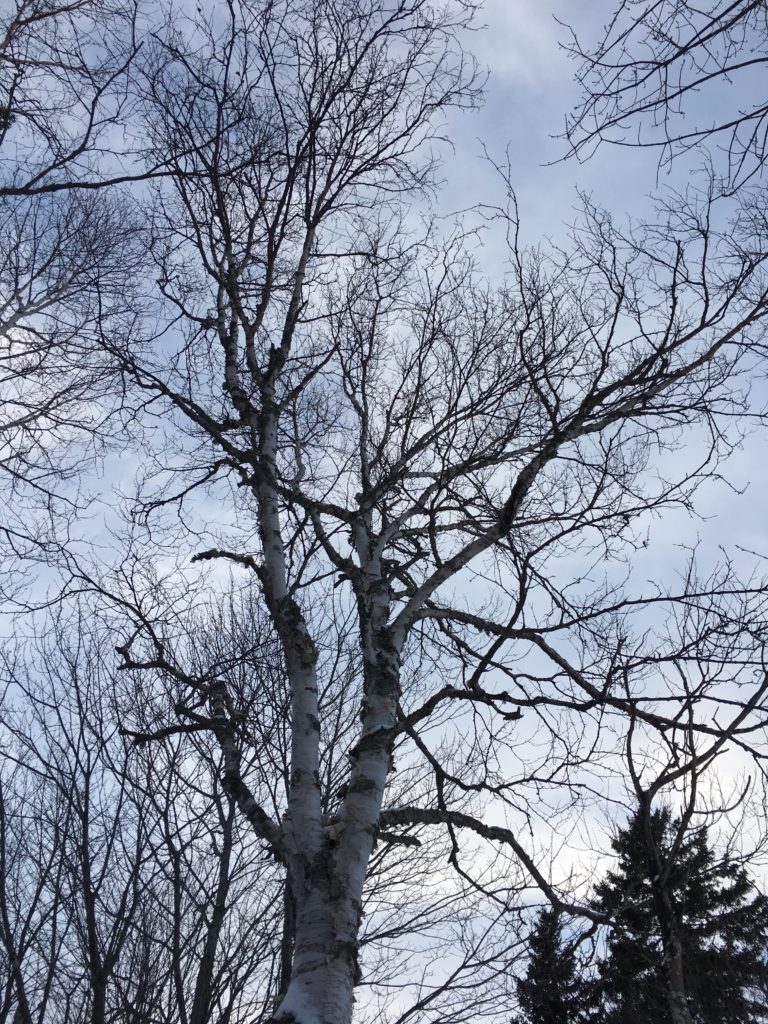
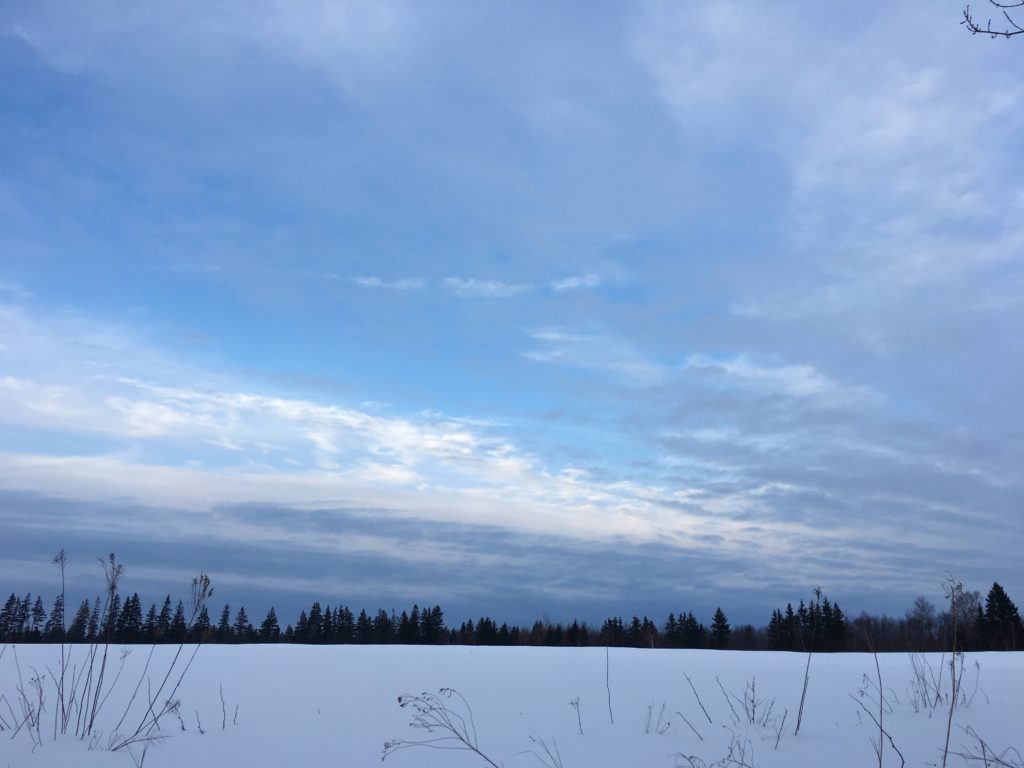
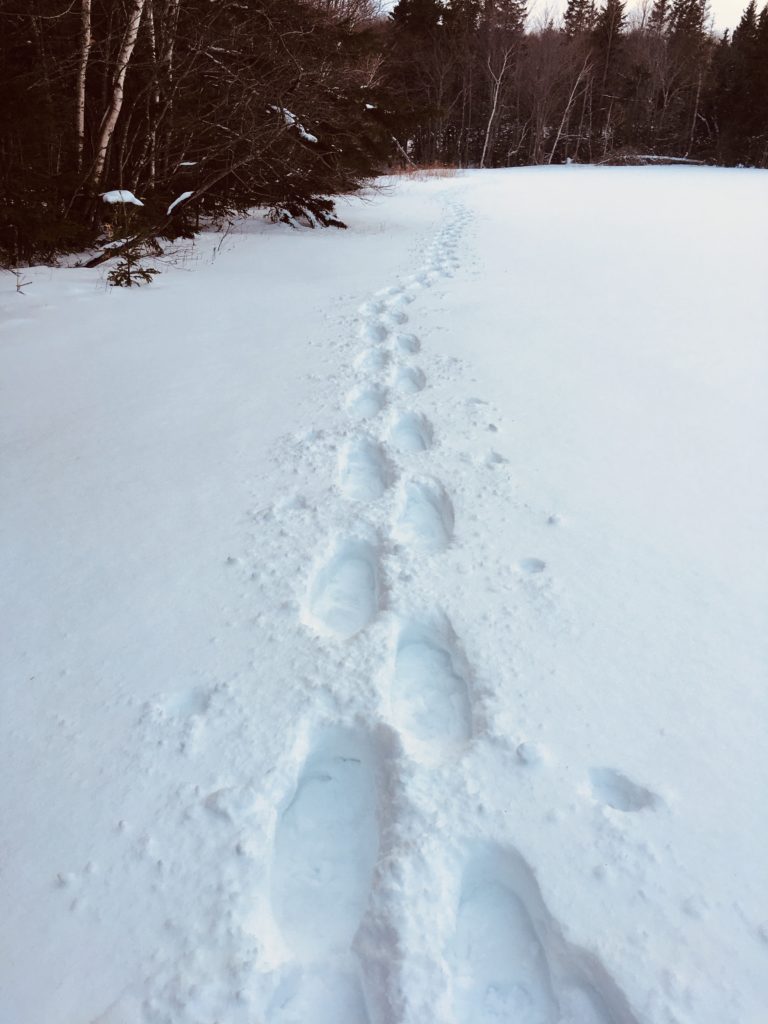
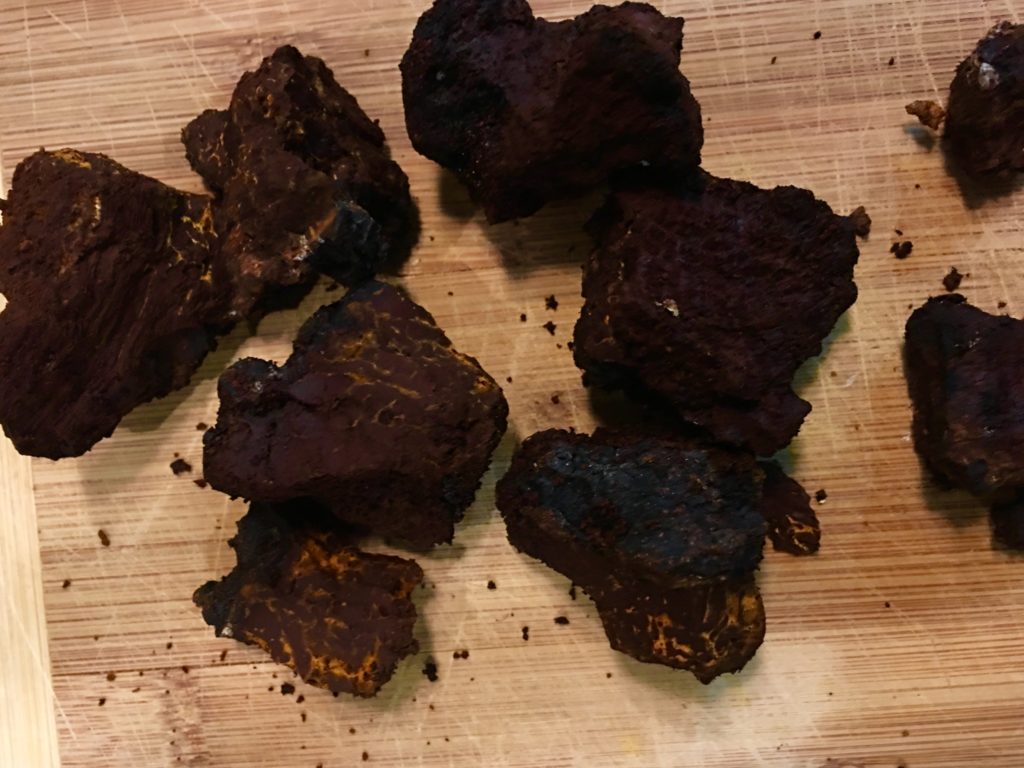

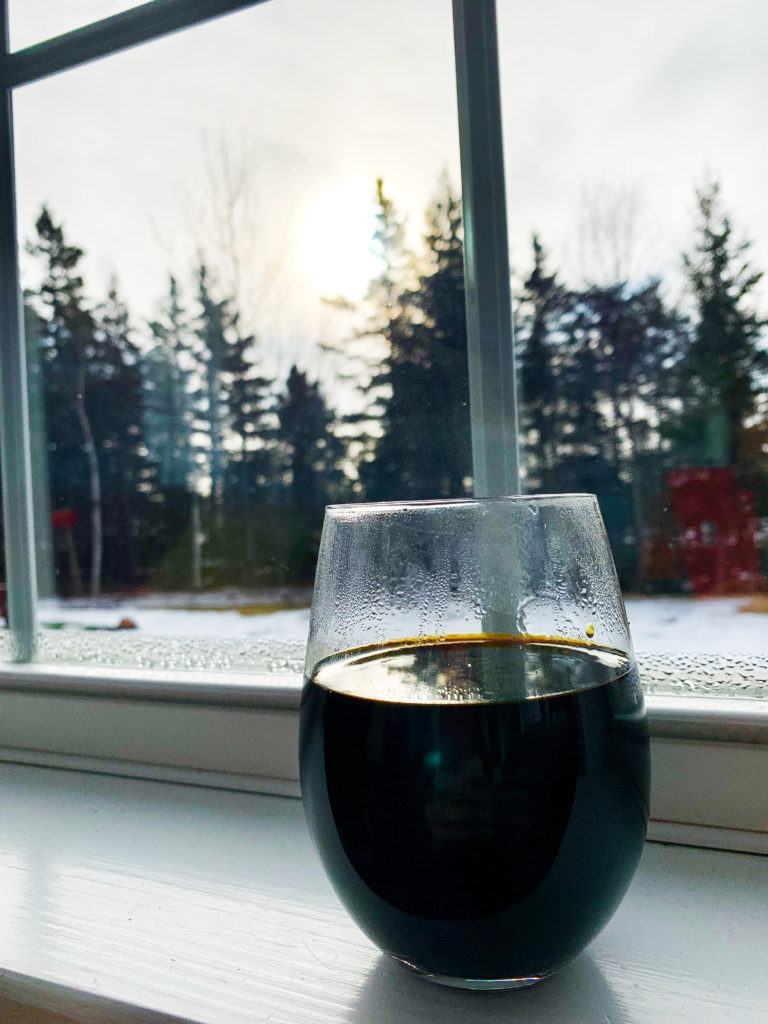
Leave a Reply